Sports
Life's indignities unfold in a darkly engaging 'Dream State'
By Aleyna Rentz / Published April 11, 2025 Before I met Writing Seminars department chair Eric Puchner, who served as my thesis adviser when I was a graduate student in the creative writing MFA program here at Hopkins, I had never heard of cross-country skiing. A southerner, I was already skeptical of anyone who’d willingly […]
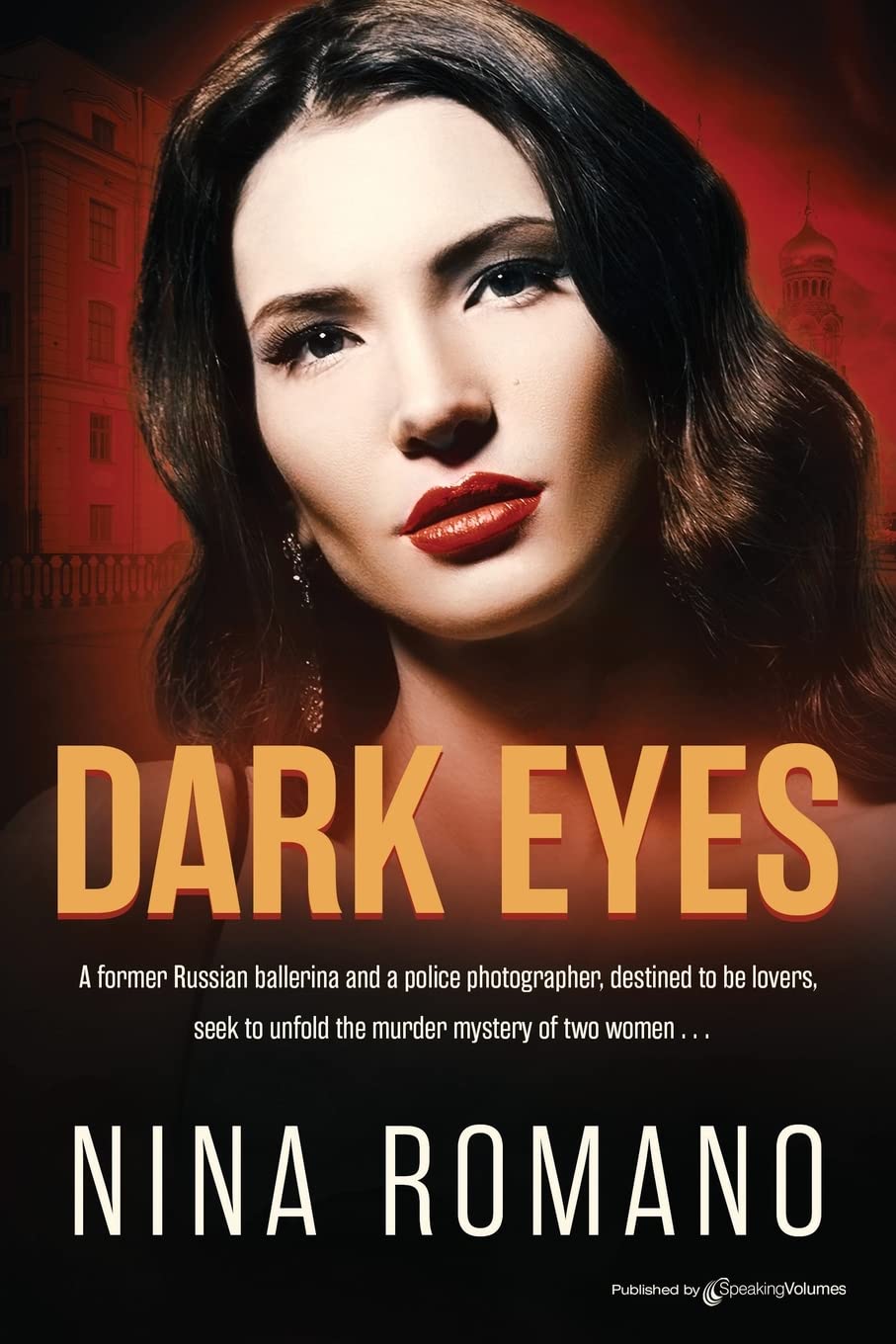

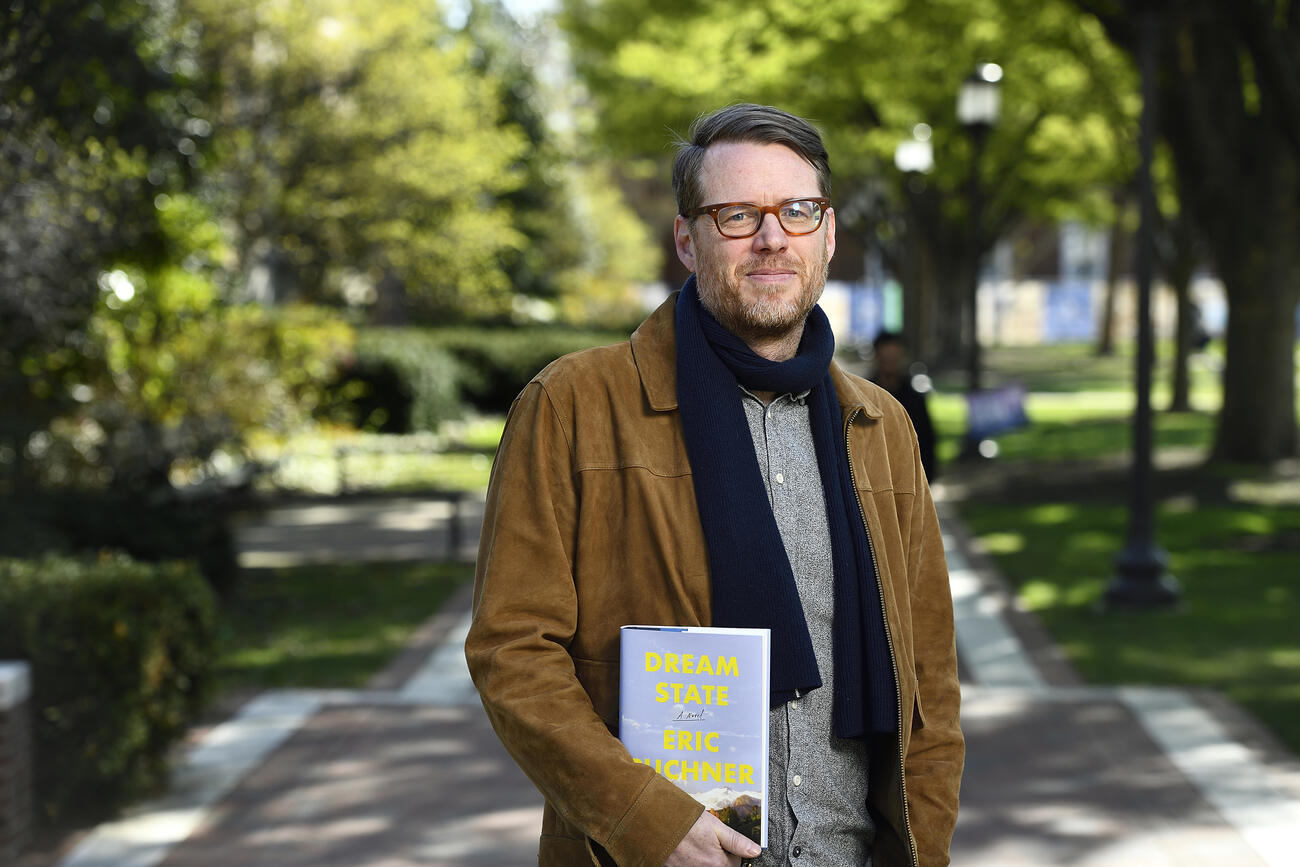
Before I met Writing Seminars department chair Eric Puchner, who served as my thesis adviser when I was a graduate student in the creative writing MFA program here at Hopkins, I had never heard of cross-country skiing. A southerner, I was already skeptical of anyone who’d willingly strap metal bars to their feet and hurl themselves down a mountain, but the idea of trekking across the wilderness with such self-imposed handicaps seemed absurd. I remember Eric insisting it was fun, but his new novel, Dream State, confirmed my suspicions. One of the main characters is haunted by the trauma of losing his best friend in a freak skiing accident that finds him buried in the snow, his body unrecoverable. I was deeply moved by this scene, but also a little vindicated.
Like most of the novels I admire, Dream State is a book laden with tragedy. Eric himself admitted that his critics usually deem his writing “too dark,” and I guess that’s fair. The characters in the novel contend with an array of life’s indignities—the swift and overwhelming onset of dementia, the helplessness of watching a loved one succumb to addiction, the nagging worry that maybe your entire life has been a series of wrong choices and wasted time. Good fiction holds a mirror to life, and in this endeavor, Dream State succeeds. What’s more undignified than being human?
Video credit: The Oprah Podcast
I thoroughly enjoyed the book, and Oprah happens to agree with me. She picked Dream State for inclusion in her famed book club, a cohort of esteemed writers that includes Barbara Kingsolver, Toni Morrison, and Colson Whitehead, to name just a few. Like many of the rest of us, Oprah has moved on from network television and entered the podcast space; she invited Eric onto her revamped show, where she reminded viewers that she, too, is only human. When discussing a part of the novel in which several characters come down with norovirus, a particularly nasty kind of stomach bug, Oprah volunteered her own experiences with the illness.
“Coming out of both ends,” she said. “It’s terrible.”
The novel opens on an idyllic estate in rural Montana, where characters Cece and Charlie find their picture-perfect wedding day thwarted by a norovirus epidemic that leaves half their guests and wedding party with, well, stuff coming out of both ends. Amidst this emotional and gastrointestinal turmoil, Cece ends up falling for, and ultimately marrying, Charlie’s troubled best friend, Garrett, establishing a love triangle that persists across five decades.
Stomach virus aside, perhaps the most demeaning thing the characters experience is the swift passage of time. A news release from Oprah’s website says that “With its focus on change—changing relationships, changing identities, and a changing climate—[Dream State] is a perfect read to carry us through the transition to spring.” I don’t know about that. If you subscribe to T.S. Eliot’s notion that April is the cruelest month, then maybe. Time in the novel is sneaky, furtive; it slips by without the characters—and the readers–noticing it. Characters jump from childhood to teenagedom over the course of paragraphs, while chapters often end in one decade and pick up in another, a disorienting effect that mimics the equally disorienting experience of getting older. That, I think, is the Dream State suggested by the novel’s title: the somnambulance with which the characters move through time, only occasionally jolting awake to realize several years have come and gone.
Several years have come and gone since I was a graduate student. Talk about an undignified experience: To obtain an MFA in creative writing, you must spend two years listening to your classmates and professors tell you everything that’s wrong with your writing. I will never forget the day I met with Eric to discuss the first 50 pages of a novel I’d written in a random burst of inspiration. It was about a failed punk singer turned stay-at-home mom, and in my frenzied hurry to get all my ideas on the page, I’d made a few mistakes (I think I referred to The Ramones as British, for one). Eric folded his hands on his desk, shook his head gravely, and said to me, “Aleyna, you know nothing about punk music.”
Unfortunately, becoming a better writer requires moments of deep mortification, but having Eric as a thesis adviser made the process easier to endure. He was an honest but gracious appraiser of my work who understood the vision I had for my fiction and helped me realize it. Even though reading and writing about his novel somewhat inverted our previous relationship, I still found myself in the position of a student, learning by example what makes a great novel.
In this Q&A, we discuss those craft choices in detail, as well as the question that must confound the naysayers of so-called “dark books”: Why do we read them, let alone like them? I imagine it must be for the same reason people like skiing: Something about the bitter cold and aching muscles and imminent danger leads to a moment of exhilaration. All that struggle and indignity reminds us we’re alive.
How does it feel to be asked so many questions about your writing? I personally don’t like talking about my writing. It feels almost invasive.
I don’t feel it as invasive, but I do feel that my answers are hardening into shtick. I’ve never been in a position where there’s a video out there with one and a half million views with a lot of people hearing me answer the same question. I never really know if someone hasn’t heard me say the same thing or not. And my kids have started to make fun of me for using the same phrases over and over. “The trap door of regret.” My son, Clem, uses it all the time as a joke now.
But the other answer to that question is that, no, I don’t like talking about my writing. Writers don’t like to talk about the process partly because it’s impossible to articulate. And that dreaded question: What is your novel about? It’s about the experience of reading it. That’s the proper answer. It’s about the emotional and aesthetic experience of reading it, which is what all novels are about. It has a lot of themes, but in the end it’s only partly about those themes. So I find that to be an especially tricky question.
Have you heard from any readers that really connected with the novel?
Oh, yeah. It’s been great. I’ve gotten some really lovely emails, a lot of them from people who connected deeply with the book because they’ve experienced similar issues. I’ve heard from a number of people who’ve dealt with parents with dementia and Alzheimer’s, as well as other people with really passionate, lovely reads of the book, which has been really heartening and wonderful to me.
I don’t expect everyone to connect to it. And a number of people haven’t, judging from the reviews on Amazon, and I totally understand that. I don’t connect to every novel that I read, but some people have connected to it really deeply in a way that makes me happy. But to try to explain why somebody connects to it and why somebody doesn’t, it’s just impossible.
You read the Amazon reviews?
I try not to, but it’s been different this time around because it was a New York Times bestseller for two weeks. So I do check in occasionally to see how it’s doing, mostly because I worry that I’m letting my publisher or Oprah down or something. So I have made the mistake of looking at the reviews. And it’s the same thing that everybody has always said about my books, which actually is heartening to me: Some segment of the population really responds to them and loves the characters and isn’t bothered by the “depressing” second half, and then there are a number of readers who just find the characters unlikable. That seems to be the euphemism people use for characters that do things that they wouldn’t do.
Or that they imagine they wouldn’t do.
Imagine. Thank you. Exactly. From my perspective, when a character is flawed in a very human way, certain readers respond to that as the character’s being unlikable. I honestly don’t know what that means anymore. So there’s that criticism, and then there’s a new one, which is that certain questions the characters grapple with aren’t answered, which for me is the whole point of the book, because I wanted to write a novel that was like life, where Cece’s problems in particular—the doubts she has about her life, about the choices she’s made—aren’t answered in any kind of definitive, black-and-white way. And I did that very much on purpose because that’s been my experience of life, that it doesn’t provide neat and tidy answers to our biggest issues and conflicts and questions. But I understand a certain type of reader doesn’t really like that.
I don’t mean to suggest that everyone hates it! A lot of people seem to be moved by it, which is great.
“[Oprah is] a very close reader who pointed out particular sentences in the book and asked about them. They were all sentences that I secretly was proud of, and I was impressed by that.”
And Oprah loved it.
She was great. When she called me at first, I was in that parking lot outside Gilman where you’re not actually supposed to park for more than 10 minutes, and she was performing a little bit because someone was filming her in her kitchen, which I didn’t know at the time. So to hear that sort of classic Oprah voice on the line was very startling to me.
But in person, in the green room, she was really warm and friendly and smart. Only a few critics have mentioned the book’s language—and to me, the sentences are the most important aspect of the book—but she’s a very close reader who pointed out particular sentences in the book and asked about them. They were all sentences that I secretly was proud of, and I was impressed by that.
Between your first novel and this one, you wrote quite a lot of short stories. Was it hard to transition from the short story mindset to the novel mindset?
I think of them as two completely different beasts. People have asked me if I ever sit down to write a story and it turns into a novel. That’s never happened to me. There’s that old adage that a short story has more in common with poetry than the novel. I’m not sure that’s precisely true—poems are quite different from prose—but I do understand what that suggests, which is that short stories require a great deal of economy. When I’m writing a story, I know where all the furniture is. I feel really comfortable writing it. I love writing the endings of short stories because stories traffic in irresolution in a way that I really respond to and like, but many people don’t.
When I sat down to write both my novels, I consciously wanted not to write a short story writer’s novel. And what I mean by that—and some of these books I admire, I’m just not interested in writing them myself—is a novel in which every chapter feels like a short story. I don’t want [chapters] to be discrete entities. I know that the lovely Ron Charles review in The Washington Post talked about how some of my chapters feel like short stories. I didn’t intend them to be that way at all. Maybe there’s a short story gremlin on my shoulder pulling the strings. But I really think of them as two completely different things.
And I’ll say one more thing, which is that I’ve always longed to write that perfect 200-page novel with no fat, where you could shake it and nothing falls out, but I don’t seem to have that gene. When I write novels, I go big. I don’t know why.
Maybe it’s more fun to write that way, to explore all of these different characters and have room to deviate from the plot.
Maybe that’s what it is. I feel so much relief and release when I’m writing a novel because it’s not a short story and I can luxuriate in the form. I love novels that span large swaths of time—in which the antagonist is time. I’m really attracted to that. And with this novel in particular, I tried to capture the sort of emotional experience of time passing. Particularly in the latter half, I wanted the passing of time to surprise both the reader and the characters. That’s why so much is elided. You get to a chapter and 15 years have passed, and the characters have a hard time believing it; they’re as unprepared for it as the reader is.
“When I read a really powerful book in which time is the antagonist, it sends me back into the present moment, and I want to live my life more deeply because I’m in better, more honest touch with my own mortality.”
There was one part of the book that I had to go back and reread, because at one moment, the characters were 8, a few sentences later, they were 13. I’d totally missed that they’d aged, and I thought it was an interesting choice to convey the passage of time so inconspicuously.
Well, that chapter in particular, that’s the Lana and Jasper chapter when they were kids. And I wanted to capture that feeling that you have when you’re, say, at summer camp. Because these are two characters who are meeting once a year for a few days every summer and have become incredibly close. And it’s like this alternate universe, which is its own space time continuum, and the world seems to be going on without them, and yet they’re remaining the same. I wanted to try to capture that particular phenomenon. I had to fight a little bit to keep that as disconcerting as it was. When I sent it out to my usual cohort of readers, old friends of mine, a couple of them suggested using white space to show the transition in time. I think my editor also suggested that, but I was insistent the whole purpose was to be disorienting.
The book ends with the wedding. Why did you decide to skip over it entirely and then put it at the end?
I had just gotten to Yaddo [an artists’ retreat where many celebrated writers have stayed] for a two-week stay, and I’d written about two-thirds of the book but had no idea how to end it. I don’t think I had written the whole wedding scene yet, but I knew what it was. I spent the first week just totally blocked, but then I had that breakthrough like, oh, maybe I should just wait, give a little glimpse of the wedding and then show the full wedding at the end, and present it as if the whole trajectory of Cece’s life was actually the dream. I don’t mean literally, but in the sense that as you get older, life tends to feel more and more dreamlike; it could have gone any number of ways, and you could have had any number of dreams that would’ve constituted your life. I wanted to present this alternative future that might have happened, which would cast this retrospective haziness on what had actually happened. When I came up with that ending, I actually cried. I was so happy I’d figured it out, and people seem to respond to the ending in particular, which is really heartening to me.
Yes, I really liked that the final image of the book is a photograph being taken, which for me reinforced the theme of life’s transience—if time is the antagonist, photography might be an inadequate weapon the characters use against it. I don’t know if you did this on purpose, but I noticed that photography was a motif throughout the book: Lana becomes a documentary filmmaker; Charlie says photography makes beautiful things ugly and ugly things beautiful; the kids use a phone app that manipulates their photos to predict what they’ll look like when they’re old; and then, of course, there’s the final scene. I wondered if that was intentional.
I think that’s really smart. The novel is about life’s evanescence, and yet you have this technology that can freeze life. I don’t know if I had thought about photography as a whole, but in many chapters, there is somebody who’s trying to document and capture and make permanent life’s impermanence. And whether that’s through documentary filmmaking, which is what Lana turns out to do, or whether it’s through that weird app that Lana has, which predicts how you’ll look at a particular age—she’s projecting into the future, trying to imagine all these different future selves. On the one hand, I did that to flatten time and make it seem as if time was two-dimensional, so that every second of our lives is actually happening simultaneously, because that’s the feeling that I wanted to capture in the book. And then at the end, the wedding photographer takes a picture of Cece leaping off the dock—she’s leaping into the future and doesn’t know that she’s going to make the choice that she made. It’s a way of not only rewinding time, but trying to freeze time before everything happens.
You’ve also said you like reading other books where time is the enemy—which books in particular?
So many. It also has to do with the fact that I am kind of in love with books that are about houses, which either age or don’t age along with the characters: Housekeeping by Marilyn Robinson, To The Lighthouse by Virgina Woolf, Light Years by James Salter.
There’s this idea that we create a house because we want a permanent place on earth, and then we go on to experience the fact that we’re completely impermanent; that juxtaposition, the poignancy of our failure to create a permanent home on Earth, is what I love about those books. The house becomes emblematic of that, and the house either survives or doesn’t. I think what we realize in these house books—To the Lighthouse, for instance—is that houses age and decay in the same way our bodies do, and there’s nothing we can do about it. One of the things I wanted to grapple with in Dream State was the fact that now more than ever, houses are vulnerable to the environment and less permanent than they’ve ever been.
So that was what attracted me. But there are so many books in which time is the antagonist. I love Jennifer Egan’s A Visit from the Goon Squad, and that’s what that whole book is about. When I read a really powerful book in which time is the antagonist, it sends me back into the present moment, and I want to live my life more deeply because I’m in better, more honest touch with my own mortality. It’s really, for me, the most profound thing a novel can do. I’m not suggesting I did that, but that’s what I tried to do.
Sports
How Kaelen Culpepper Has Answered His Draft Day Question Marks
Image courtesy of Ed Bailey, Wichita Wind Surge (photo of Kaelen Culpepper) When the Twins selected Kaelen Culpepper with the 21st overall pick in the 2024 MLB Draft, there were a few raised eyebrows. Sure, Culpepper had plenty of tools, but concerns about plate discipline and defensive projection gave some evaluators pause. Less than a […]


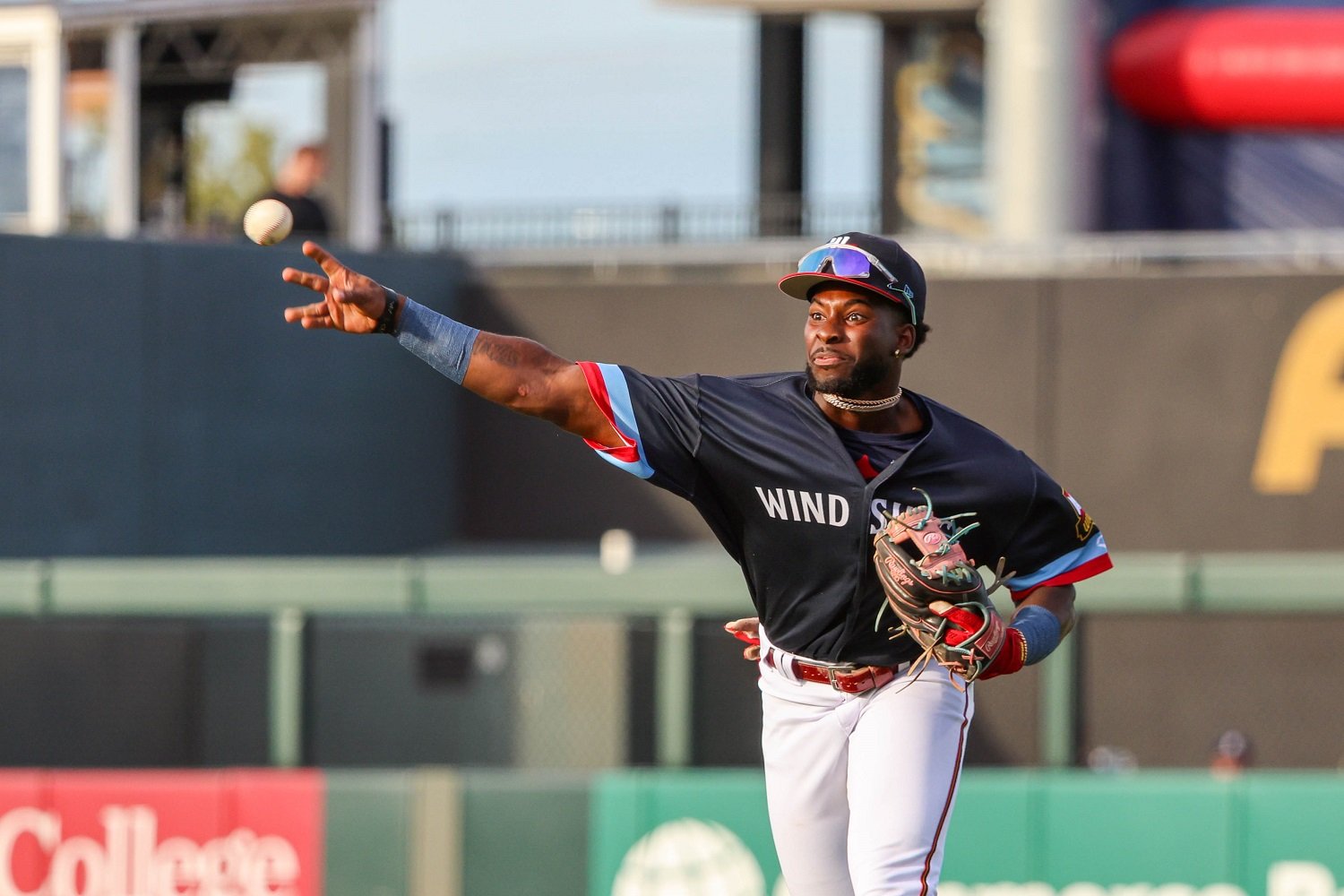
Image courtesy of Ed Bailey, Wichita Wind Surge (photo of Kaelen Culpepper)
When the Twins selected Kaelen Culpepper with the 21st overall pick in the 2024 MLB Draft, there were a few raised eyebrows. Sure, Culpepper had plenty of tools, but concerns about plate discipline and defensive projection gave some evaluators pause. Less than a year later, Culpepper is not only putting those concerns to rest, he’s making evaluators look like they undersold him.
Now firmly entrenched in Double-A Wichita and facing older, more experienced competition, Culpepper has surged into top-100 prospect territory. His all-around game is showing up in the box score and answering every pre-draft question thrown his way.
Chasing Down the Concerns
One of the most commonly cited red flags at the time of the draft came from The Athletic’s Keith Law, who wrote, “I know some teams had him in the second round because his chase rate was high, albeit not extremely so.” That concern was fair based on his collegiate track record, but Culpepper has responded in a big way.
In his first full professional season, Culpepper has trimmed his chase rate significantly, especially against right-handed pitching. His strikeout rate currently sits under 16% for the season, and the right-handed hitter has a 16.25 K% against righties. He’s begun to show a mature ability to lay off pitches just outside the zone, something that was seen as a “maybe someday” skill on draft night and is already a present tool.
Even FanGraphs’ Eric Longenhagen, who was skeptical on draft day, has had to take another look. “I have mixed-positive feeling about the Twins’ first day because I’m lukewarm on Kaelen Culpepper due to his chase tendencies,” Longenhagen said after the pick. But Culpepper has flipped that narrative. His walk rate is hovering around 11% during the 2025 campaign, giving him a nearly even K/BB ratio. This is no small feat for a 21-year-old adjusting to professional spin and facing older pitchers over 78% of the time.
The Shortstop Debate? Maybe It’s Over
Defensively, there was another looming question: Could Culpepper stay at shortstop, or was a move to third inevitable? ESPN summed it up nicely: “Ultimately, his pro ceiling will likely be decided by whether he can stick at shortstop or if he moves to third base on his way to the majors.”
A year later, most evaluators are in agreement that he can stick.
Culpepper has shown above-average range, clean footwork, and a plus arm at short. His internal clock is improving, and he’s making throws from deep in the hole that only true shortstops can pull off. The Twins have continued to give him regular reps at the position with only a handful of appearances at second base. Scouts now project him to remain there long-term unless the major-league roster demands a positional shift.
That strong arm, once merely a bullet point in the scouting report, is now a calling card. In pre-draft evaluations, he was seen on the fringe between shortstop and third base. Now, he has the potential to be an impact defender as a big-league shortstop. He’s turned potential into production, and if anything, he’s separated himself from many of the other middle infielders in his draft class by staying up the middle.
Crushing the Offspeed Test
CBS Sports questioned whether Culpepper could handle spin, writing, “Can shortstop Kaelen Culpepper improve his breaking ball recognition?” It’s a valid question for any young hitter, especially one whose college profile leaned more on twitchy athleticism than polish at the plate.
But once again, Culpepper’s adjustments have been impressive. Since his promotion to Double-A, he’s actually improved his slugging percentage against offspeed and breaking pitches, showing better pitch tracking and timing. Over his last 10 games (49 PA), he is slashing .432/.490/.523 (1.013) with two extra-base hits and as many walks (5) as strikeouts (5). He’s not just laying off the tough stuff, because he’s doing damage when pitchers hang them.
Fast Track to Target Field?
What’s most exciting is just how quickly Culpepper has acclimated to professional ball. He’s one of only a handful of 2024 draftees already playing at Double-A, and he hasn’t missed a beat. The jump from college to pro ball is steep. The jump from there to Double-A is a leap. Culpepper made both without stumbling.
It’s rare for a late first-round pick to push into top-100 territory so quickly, but Culpepper has earned it. His combination of steady defense, improved plate discipline, and surprising offensive production against older pitchers has made him one of the most exciting infield prospects in the system.
The draft-day doubts have all been addressed quickly. The Twins believed in Culpepper’s upside when they took him at 21, and in less than 12 months, they may have already found the player who could be their shortstop of the future. If the trajectory holds, Culpepper could be pushing his way to Minneapolis by mid-2026.
And when he gets there, don’t be surprised if the same evaluators who doubted the pick are suddenly talking about how obvious it was all along.
Which doubt does Culpepper still need to answer? When will he debut with the Twins? Leave a comment and start the discussion on one of the organization’s most exciting prospects.
Sports
LPA’s Sydney Daniel selected to NFHS National Student Advisory Council
Watch video clips of Lincoln Park Academy’s 2025 graduation ceremony Take a look at Lincoln Park Academy’s May 23 graduation ceremony at the St. Lucie County Fairgrounds. Sydney Daniel is a student-athlete with lofty goals. The Lincoln Park Academy rising junior is already building a resume in which some of those dreams are within reach. […]
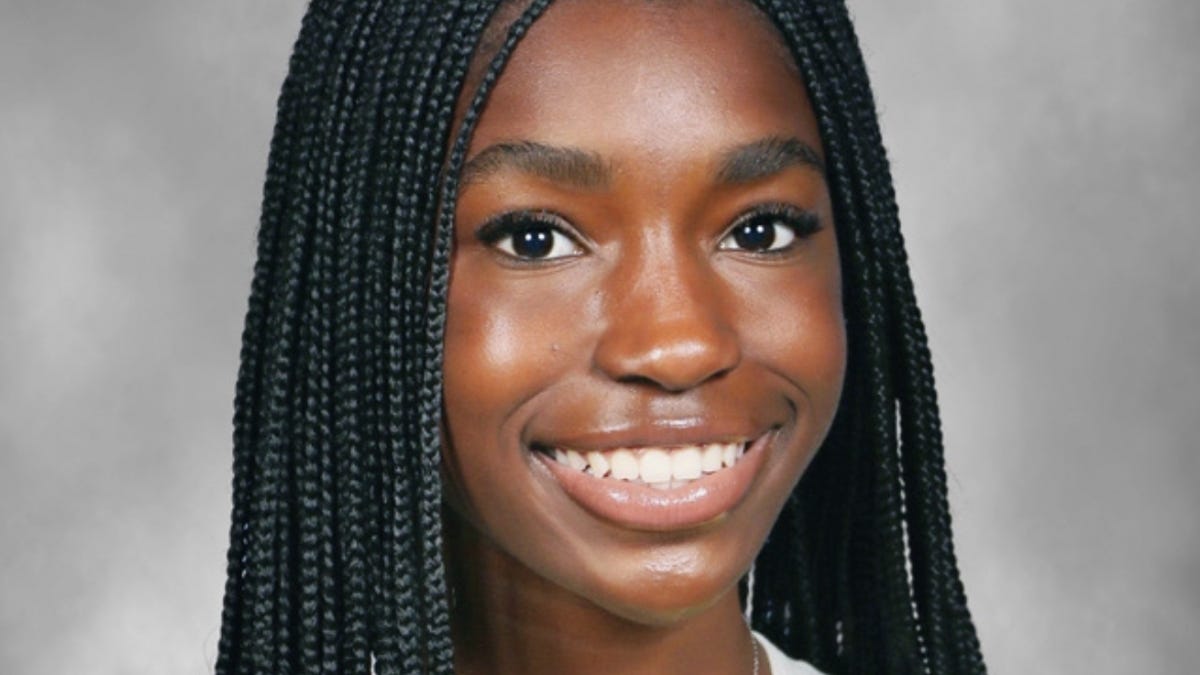
Watch video clips of Lincoln Park Academy’s 2025 graduation ceremony
Take a look at Lincoln Park Academy’s May 23 graduation ceremony at the St. Lucie County Fairgrounds.
Sydney Daniel is a student-athlete with lofty goals.
The Lincoln Park Academy rising junior is already building a resume in which some of those dreams are within reach. In track and field this past season, she helped the Greyhounds qualify for regionals in both the 400- and 1,600-meter relays. Combine that with a 5.2 weighted GPA (3.95 unweighted) and it’s not hard to see that her future is bright.
Daniel’s work on and off the track has afforded her an opportunity to be a part of exclusive company this summer. She was one of 16 high school student-athletes countrywide selected to serve on the NFHS National Student Advisory Council. The group is set to gather at the NFHS National Student Leadership Summit, which will be held Sunday through Thursday in Indianapolis.
“To be part of this group, it’s not only something that looks good on applications or seems prestigious,” she said. “It’s truly about just communicating and advocating for all high schoolers across the nation, gathering their insights and actually implementing them into stuff that they would like to see.”
Two students from each of the eight regions nationwide were selected to participate in the council. According to the National Federation of State High School Associations (NFHS), the students “have exhibited outstanding leadership skills, achievements in academics and sports/activities, and a commitment to making a positive impact in their communities.” Daniel’s region is Section 3, which represents the Southeast.
Responsibilities of the 16 students include identifying and communicating areas of support possibly needed from the NFHS and state associations as well as ideas to increase student involvement in cocurricular activities.
“I do understand the importance of the position and how I am someone supposed to advocate not just for my state, not just for my section but truly for the entire United States and all of the other millions of students that are involved in educationally based activity programs,” Daniel said. “So being able to be in a position in which I could do that really and truly is a blessing. I’m very excited to do so.”
The 16 members met in April in Indiana to plan for the summit. Daniel says the council’s objective is to increase involvement and get a student from every state to attend.
“We hope to encourage some of the people who attend and make sure that they know you know what the NFHS is and what the NSAC does and how they can be a part of it from their own state,” she said.
Through the encouragement of LPA athletic director Veryl Moore, Daniel is also a member of the FHSAA’s Student-Athlete Advisory Committee.
Through her various roles, Daniel has grown into being a leader. She believes being reliable and someone who can be key assets, but nothing has a greater value than being able to listen.
“I would say that’s the most important part of being a leader.” Daniel said. “You can have all the other attributes like being honest or be really good at advocating, but if you can’t listen to others, then there really is no point in what you’re doing.”
Daniel is also the sports editor in chief of the student newspaper and is a member of the Key Club and National Honor Society, among other clubs. She admits that being that active all while excelling in the classroom is a lot to balance.
“It’s just about prioritizing focusing on what matters most to me, which of course is my academics and my athletics and all of my extracurriculars,” she said. “It’s just realizing where they all fall in terms of importance. … I do really love having a planner, it’s probably one of the best things that I have; just being able to divide time and just allocate where my activities and where have time for each of them. Being a really good planner, planning out my weeks in advance so that I have time to include everything and all my responsibilities is really important to me.”
Daniel hopes to graduate in the top 10% of her class. Her short-term plan is to attend a four-year university to study biomedical engineering. In the long term, Daniel aspires to be an Olympic athlete.
Road Trip Essentials
Expedia: Shop discounted airfare, transportation and more
Kayak: Save on flights, hotels, and more
Airbnb: Travel with the privacy of your own home
Top wireless charger: Yootech Wireless Charger
Best portable battery pack: Mophie Powerstation Plus
Last-minute supplies: Walmart has you covered
Patrick Bernadeau is a sports reporter for Treasure Coast Newspapers. He can be reached at 772-985-9692, on X at @PatBernadeau or via email at pbernadeau@gannett.com.
Sports
HBCU Olympian Returns to Elite Form in First Race Back
Randolph Ross wasted no time making an impact. In his first race after a three-year suspension, the former HBCU Olympic Gold Medalist from North Carolina A&T ran 45.41 seconds in the men’s 400 meters at the Meeting International de Marseille. He finished second behind fellow American Demarius Smith, who won with a personal best of […]
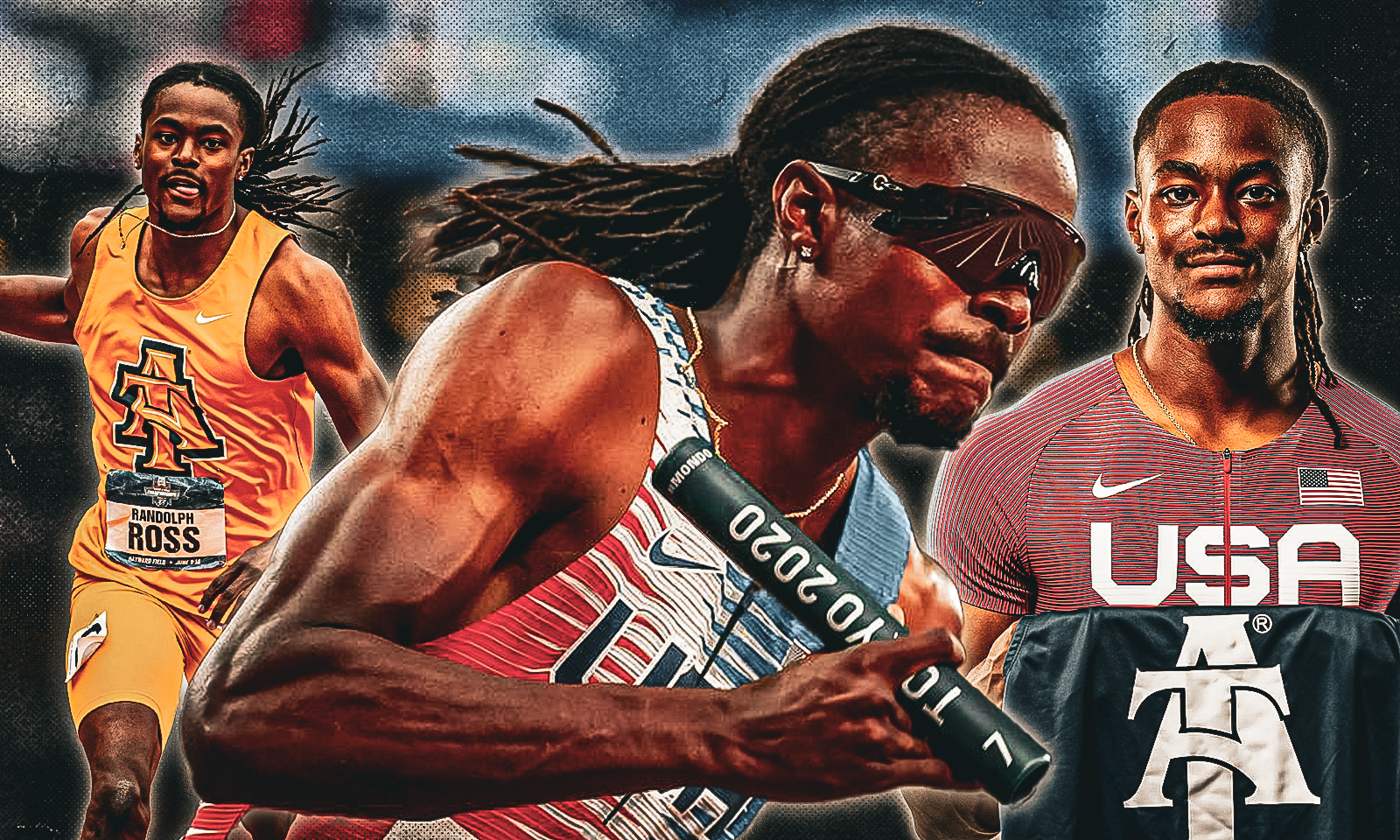
Randolph Ross wasted no time making an impact. In his first race after a three-year suspension, the former HBCU Olympic Gold Medalist from North Carolina A&T ran 45.41 seconds in the men’s 400 meters at the Meeting International de Marseille. He finished second behind fellow American Demarius Smith, who won with a personal best of 45.14.
The performance was a strong return. While it wasn’t close to Ross’s personal best of 43.85—one of the fastest 400-meter times in history—it was enough to turn heads. His time ranked among the top 25 by an American this season and showed he still belongs on the track.
A Return With Meaning
The race marked more than just a finish line. It was a test of whether Ross still had the speed and mindset that once made him a rising star. After missing three years due to a ban for whereabouts failures and tampering, Ross is back—and still competitive.

He continued to train, though restrictions prevented him from working with USATF-affiliated coaches or athletes. One exception allowed him to continue training with his father due to their family connection. Now that he can, the 24-year-old HBCU athlete and Olympic Gold Medalist aims to rebuild his career. Ross opened his return in Marseille, and if he competes again this summer, strong results could help reopen doors to national and international competition.
HBCU Roots, Global Goals
His story continues to resonate, especially in the HBCU sports world. North Carolina A&T helped develop Ross into a world-class sprinter. His father, Olympian Duane Ross, guided him through college and still supports his training. That foundation helped Randolph become an NCAA champion, an Olympian, and one of the brightest prospects in American track.
Now, after years away, he’s working to prove that one mistake does not define a career. The early signs are encouraging. And if Marseille was any indication, Randolph Ross’s comeback may just be getting started.
Related
Sports
Sinner Reigns in Wimbledon Duel
ATLANTA — The remaking of the Nationals has taken another critical step, as has MLB’s push to get its top prospects to the majors as quickly as possible. Washington selected Oklahoma high schooler Eli Willits with the first pick in the 2025 draft Sunday night. By selecting the 17-year-old, switch-hitting shortstop, the Nationals stunned many […]

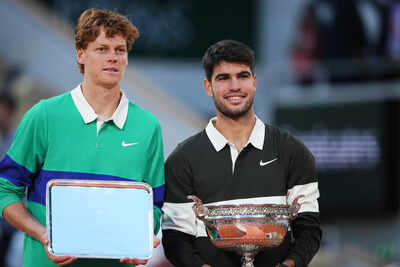

ATLANTA — The remaking of the Nationals has taken another critical step, as has MLB’s push to get its top prospects to the majors as quickly as possible.
Washington selected Oklahoma high schooler Eli Willits with the first pick in the 2025 draft Sunday night. By selecting the 17-year-old, switch-hitting shortstop, the Nationals stunned many experts who predicted the team would choose LSU pitcher Kade Anderson, who led the Tigers last month to their second College World Series title in three years and was the event’s Most Outstanding Player. Anderson went No. 3 to the Mariners.
The Nationals’ selection arrived just a week after Mark Lerner, the club’s managing principal owner, fired president of baseball operations Mike Rizzo and manager Dave Martinez, in a bid to reverse what has been more than half a decade of losing in the nation’s capital.
Since the leadership shift, the Nationals carried on with their draft preparation, overseen by assistant GM Mike DeBartolo, ultimately shocking much of the baseball world. DeBartolo said Willits was “the guy we wanted all along.”
The No. 1 pick this year carries a record slot value of $11.08 million. It’s not yet certain how close to that number the signing bonus for Willits will be, but it’s expected that the Nationals will be well below this figure and save significant funds.
Path to Stardom
Being so young, and not turning 18 until December, Willits will have a more uphill climb to mirror the rapid pathway of Pittsburgh star Paul Skenes, the draft’s top pick two years ago. Since Skenes went from LSU to Pittsburgh, he has burst into superstardom, won last year’s National League Rookie of the Year award, and was named Saturday as the starting pitcher for the NL in the All-Star Game for the second-straight year.
That run of success by Skenes, and national prominence burnished by his relationship with girlfriend Livvy Dunne, gives Willits, the son of former MLB player Reggie Willits, a lot to match. MLB, however, continues to promote a shorter development pathway to the big leagues for prospects and put more marketing effort and editorial emphasis on the MLB Network and MLB.com for minor leaguers.
To that end, five first-round selections from last year’s draft have already reached the majors, including the Royals’ Jac Caglianone, as well as the Angels’ second-round pick from 2024, pitcher Ryan Johnson.
A notable exception to that has been Travis Bazzana, last year’s No. 1 overall pick to Cleveland. The second baseman has reached the Class AA Akron (Ohio) Aeros, but has battled an oblique strain since May, and is out of action until at least later this month.
Willits, meanwhile, is the youngest player to be the No. 1 pick in the MLB draft since Ken Griffey Jr. in 1987.
Draft Matters
MLB held the draft at the Coca-Cola Roxy, a key part of The Battery mixed-use development that surrounds the Braves’ Truist Park, the host venue for this year’s All-Star Game. The event, of course, still doesn’t match the stature seen for the NFL and NBA drafts. As MLB has held its draft in conjunction with the All-Star Game since 2021, though, it’s also continued to give the event a heightened sense of place.
The settling for this year’s event included a lively crowd filling the 3,600-person concert venue, even if the numbers were still far below the 600,000 that showed up in Green Bay for the 2025 NFL Draft.
The festive vibe continued to show a marked departure from the cramped set of tables and much more limited setup at MLB Network studios in Secaucus, N.J., where the MLB draft was held from 2009–20. MLB commissioner Rob Manfred, however, was initially greeted with hearty fan boos, as is also the case with other league commissioners at their respective drafts.
The 2025 MLB draft had no player selections in attendance for the first time in 15 years, due to a complex mix of reasons. The Rockies selected Ethan Holliday at No. 4. Holliday is the brother of Orioles infielder Jackson Holliday and the son of former MLB star Matt Holliday, who played the first five seasons of his career in Colorado.
Sports
Former HBCU Football Player Killed, Current Student Charged
Police say a “parking garage dispute” at the Mac4460 apartments near South MacGregor Way and Calhoun in Houston, Texas, ended with the fatal shooting of a former HBCU athlete Friday evening. The victim, 24-year-old Tyler Martinez, played four seasons as a defensive tackle at Texas Southern University. Martinez completed his football career in 2023. He […]

Police say a “parking garage dispute” at the Mac4460 apartments near South MacGregor Way and Calhoun in Houston, Texas, ended with the fatal shooting of a former HBCU athlete Friday evening. The victim, 24-year-old Tyler Martinez, played four seasons as a defensive tackle at Texas Southern University. Martinez completed his football career in 2023.
He suffered multiple gunshot wounds and died at the scene. Police arrested 22-year-old Isaac Robinson, who is enrolled as a sophomore at Texas Southern University and is a fellow resident of the apartment complex, after he reportedly returned to the scene. Authorities charged Robinson with first-degree felony murder and set his bond at $100,000. If released, he must wear a GPS monitor, follow a nightly curfew, avoid weapons, drugs, and alcohol, and stay within Harris County or adjacent counties.

Details of the Incident and Legal Proceedings
Houstonstringer.com reports that Robinson admitted to his involvement in the shooting in court records. Prosecutors said a woman connected to Robinson handed him a firearm during the altercation. Witnesses said Martinez had begun to withdraw when Robinson “allegedly fired three shots into Martinez’s torso.” Robinson appeared overnight in Harris County Probable Cause Court. He currently attends Texas Southern University as a sophomore and works for a local security company.
Martinez, a Houston native and Humble High graduate, joined the TSU Tigers in 2019. Standing 6-3 and weighing 283 pounds, he played every season through 2023. He recorded 57 tackles in 20 games, including four sacks. HBCU football analysts recognized his steady performance. The Bluebloods network called him “the best DT in the SWAC,” reflecting his significant impact on the field.
Concerns Raised for HBCU Student Safety
This case highlights concerns about safety in off-campus student housing and emphasizes the need for conflict resolution efforts within the Houston community. We will continue monitoring the situation and provide updates as they become available.
Related
Sports
Canada outlasts Thailand 3-2 in women’s Volleyball Nations League
By Canadian Press on July 13, 2025. ARLINGTON — The team from the Land of the Smiles went home disappointed after dropping a tough match to Canada in the women’s Volleyball Nations League tournament on Sunday. Canada defeated Thailand 3-2 in the best-of-five match, played at College Park Center in Arlington, Texas. Thailand won the […]
By Canadian Press on July 13, 2025.
ARLINGTON — The team from the Land of the Smiles went home disappointed after dropping a tough match to Canada in the women’s Volleyball Nations League tournament on Sunday.
Canada defeated Thailand 3-2 in the best-of-five match, played at College Park Center in Arlington, Texas.
Thailand won the opening set 25-17, but the Canadians bounced back with 25-23 and 30-28 wins to take a 2-1 lead. Thailand forced a fifth set with a 25-23 win in the fourth.
Canada won the tiebreaker 15-13.
Hilary Howe Johnson led all Canadian scorers with 25 points, while Emily Maglio had 19. Kongyot Ajcharaporn led Thailand’s scoring with 27 points, while Kokram Pimpichaya had 23.
Canada committed more unforced errors in the match (24-20) and had more blocks (14-7). Thailand led in digs (166-144) and attacks (84-66).
Canada remains 16th in the 18-team preliminary round robin with three wins, while Thailand is 17th with just one win.
This report by The Canadian Press was first published July 13, 2025.
The Canadian Press
11
-10
-

 Technology2 weeks ago
Technology2 weeks agoPet fitness and wellness trends for a healthier and happier dog
-
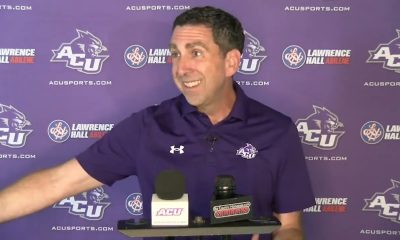
 College Sports2 weeks ago
College Sports2 weeks agoWAC to Rebrand to UAC, Add Five New Members in 2026
-

 Motorsports2 weeks ago
Motorsports2 weeks agoWhy Cosmetics are Making Up for Lost Time in Women’s Sports
-
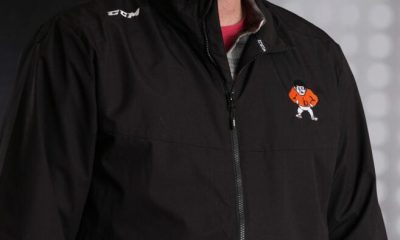
 College Sports2 weeks ago
College Sports2 weeks agoA new era of Dickinson hockey begins behind the bench – The Dickinson Press
-

 Health3 weeks ago
Health3 weeks agoFlorida assault survivor shares hope for change with new mental health law
-

 Motorsports2 weeks ago
Motorsports2 weeks agoNASCAR This Week – Patriot Publishing LLC
-
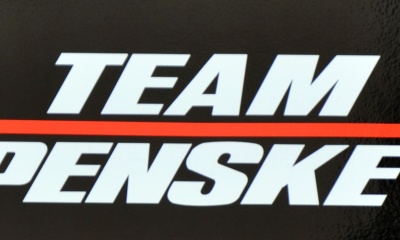
 Motorsports1 week ago
Motorsports1 week agoTeam Penske names new leadership
-

 Sports3 weeks ago
Sports3 weeks agoHow to Market FAST Sports Content to New Audiences
-

 Youtube3 weeks ago
Youtube3 weeks agoFunniest MLB rain delay moments
-
Health3 weeks ago
McDonald named volleyball assistant coach




























































